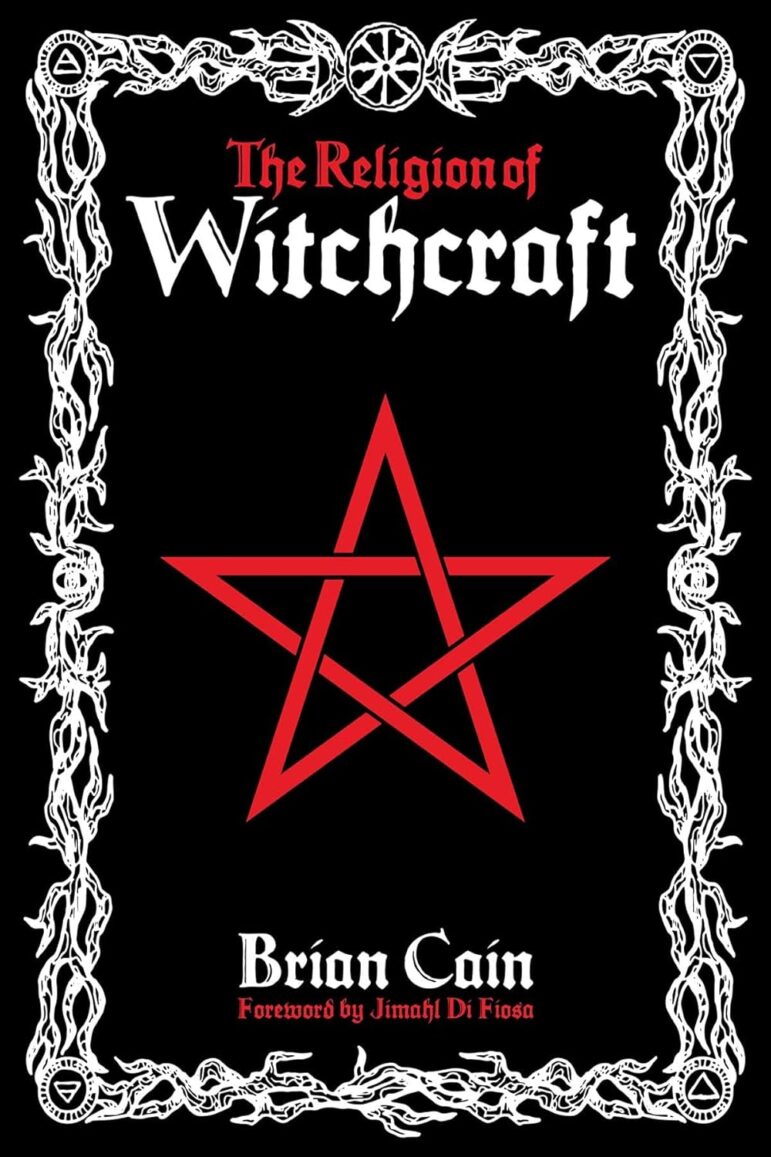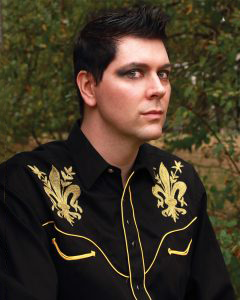
NEW ORLEANS – Earlier this year, Witch, author, and Alexandrian High Priest Brian Cain released The Religion of Witchcraft, which author Michael Herkes praised as a work that “transcends the superficiality of social media sorcery,” while the well-known Witch Laurie Cabot said it “unveils the connection between the gods of witchcraft and its everyday practice.” The book can be viewed as a modern grimoire, encouraging readers to embrace the living religion of the Great Goddess and the wisdom of the Craft.
In the book, Cain emphasizes that Witchcraft is far more than folklore; it is an enduring tradition that serves as a religion, myth, and secret society. He explores its role as a fertility and mystery cult, as well as a Priesthood with initiatory practices passed down through generations. After centuries of suppression, Cain argues that Witches and Priestesses are reclaiming their rightful place in Western civilization, reviving a legacy that extends from ancient Egypt and Rome to medieval Europe and the British Witchcraft revival of the 1950s.
Nevertheless, the book remains centered on the religious aspects of Witchcraft practices.

In an interview with The Wild Hunt, Cain discussed his motivations for writing the book. While many books on Witchcraft explore its religious aspects, we were curious if something specific inspired him to write this one. Cain responded that The Religion of Witchcraft is, in a way, a sequel to his earlier work, Initiation into Witchcraft, both aimed at continuing the educational work initiated by Witches in the 1950s. “Although the Craft has seemingly come a long way, it still encounters the same detractors and their propaganda,” Cain explained, acknowledging that part of his goal was to introduce readers to the history of Witchcraft and honor its ancestors.
Cain also noted that despite the Craft’s progress, it still faces familiar challenges, including modern cosmopolitan ideas that frame the Witch through a social identity lens, far removed from its origins as a fertility cult and mystery tradition. Understanding the history of the Witchcraft revival and its foundational Priesthood, he says, is crucial for preserving the Craft in a world often marked by skepticism. This history encompasses folklore, medieval myths, and the contributions of modern Elders and occultists.
“I prefer the term pioneers,” Cain said when asked if honoring the ancestors of Witchcraft was important to him. “I don’t partake in formal ancestral veneration, and some of them are still alive. But yes, key figures like Gerald Gardner, Doreen Valiente, and Alex and Maxine Sanders laid the groundwork for this movement that continues to work its magic in today’s world.”
Cain also remarked on the evolving nature of the Craft, which has become both more open and yet more secretive. He believes this reflects a generation seeking deeper, experiential knowledge, moving away from the do-it-yourself approach that became popular a few decades ago. “My book is more inclusive in the sense that I recognize that not all Witches throughout history were part of the Priesthood,” Cain explained. “But I want people to know that we exist and that there are thousands of us around the world.”
When asked about the idea that many Witches today have a solid understanding of ancient history, Cain agreed, particularly in initiatory traditions like Alexandrian and Gardnerian Witchcraft. He noted that practitioners in these traditions are generally well-versed in medieval and ancient history, though it’s often difficult for outsiders to distinguish between serious Priestesses and pretenders, and academia rarely makes the effort. “A well-trained Priestess can rival any scholar at the Vatican,” Cain said. “We know who we are—the heralds of the Goddess Religion in Western civilization. I just wish some Witches would stop apologizing for that.”
The conversation then turned to gatekeeping within Witchcraft. Cain acknowledged that this is a sensitive topic, but he was clear in his stance: “Witchcraft is, and largely remains, a secret society. It is the responsibility of all initiators and covens to act as gatekeepers—our oaths require it. So, in part, my answer would be that it is frankly none of their business. To enter the Mysteries, one must be initiated, and that happens only when we feel someone is suitable.”
Cain also stressed that “The Craft is exclusionary because it is private; it is not meant for the masses. I’m sure this is true of other initiatory traditions. There are many reasons to exclude someone from your life or religious community, and the idea of regulating that has dangerous implications. Why are outsiders even debating this? I suspect it’s FOMO—fear of missing out.”
One of the notable aspects of the book is its inclusion of interviews with other Witches, giving readers insight into diverse perspectives. Cain explained that he wanted to honor his Priesthood, specifically Gardnerians and Alexandrians, while also acknowledging the broader community of Witches today. “The contemporary Witchcraft revival exists on a spectrum, and the word ‘Witch’ spans an even broader one,” Cain said. “I invited a diverse group of Witches to answer the same questions, and even those from similar traditions often had different views. I left it up to the reader to draw their own conclusions.”

Author and High Priest Brian Cain
Cain also emphasized that “Gardnerians and Alexandrians are Witches of the Book. We are separate branches of the same Priesthood and the guiding stars of this new religion.” He pointed out that despite their differences, Gardnerians and Alexandrians share a common understanding and often circle together, with initiation being recognized across both traditions.
Finally, Cain touched on the question of solitary versus coven-based practices, as well as self-initiation versus traditional initiation. He reflected on his own experiences, noting that while his background is rooted in traditional covens, the Craft today accommodates a wide range of practices.
“By virtue of myself being an Alexandrian High Priest, I think it would go without saying that my culture and training did influence my work. But I have not always been Alexandrian, and there is a much larger story to tell. We have others like Robert Cochrane and Sybil Leek, who embraced the contemporary Witchcraft revival and shared the general beliefs of our religion without any formal connection to Gerald Gardner or the Book of Shadows. This is in part why I do not use the old English word for Witch, “Wicca,” to describe my religion. The notion that Gerald Gardner was the sole emissary of religious Witchcraft is nonsense. This movement was not just made up of Gardnerians, and although sharing many common beliefs, these early sects were usually at odds with them.”
Despite that, we noted that the book contains what some might refer to as a lot of “how-to” content. Cain comes from a coven and traditional background, so it raises questions about his views on solitary versus coven practitioners, and initiated traditions versus self-initiatory practice.
Cain said that this question reminded him of a year he was doing a ritual at HexFest with the New Orleans Coven.
A woman afterward approached me and told me how delighted she was and how beautiful it was. She then informed me that she had never seen an Alexandrian Witchcraft ritual before. I replied, “You still have not.” In my Grimoire section, I have indeed provided occult rituals, folklore, poetry, and spells, most of which were written by myself. When people approach the path of Witchcraft, they are very curious about magic. What I am providing is a safe and gentle guide to test the waters. If the reader is drawn to the religious concepts provided in my work, and if they are magically inspired by its occult workings, then perhaps they, too, will approach the path of initiation. Likewise, if the waters of magic do not quench their thirst, perhaps they will go off and become a Buddhist. Both outcomes are perfectly acceptable.
We were curious then and ended with a final question, asking, “What do you hope readers take away from this book?” The closing chapters seemed to strongly encourage readers to practice, regardless of their access to an initiatory tradition. It felt like the message was, “You can do this if it’s within you,” though perhaps that wasn’t exactly your intended meaning.
Cain noted that perhaps he wrote this book because he was “tired of people telling me that my religion was not a religion.”
He added “it is very strange as a Priest to engage in that dialogue. The general population and even the majority of people within the magical communities are ignorant of our history, and although this is not a history book, it may contain perspectives often not properly considered. I also hope to create a narrative for the reader that we unapologetically know who we are. Witchcraft seems to be trending right now, but it really isn’t. What is trending is magic and personal expression. And all that is fun and perfectly fine, but I personally believe that the religion of Witchcraft has something much more important to offer society: the Great Goddess and the wellspring of the Mysteries.”
The Religion of Witchcraft is published by Warlock Press and available on Amazon and other retailers.
The Wild Hunt is not responsible for links to external content.
To join a conversation on this post:
Visit our The Wild Hunt subreddit! Point your favorite browser to https://www.reddit.com/r/The_Wild_Hunt_News/, then click “JOIN”. Make sure to click the bell, too, to be notified of new articles posted to our subreddit.